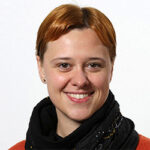The impact of oxygenation and feeding on soundscape patterns in RAS tanks holding Atlantic salmon (Salmo salar).
Publication details
Journal : Aquaculture , vol. 611 , 2025
International Standard Numbers
:
Printed
:
0044-8486
Electronic
:
1873-5622
Publication type : Academic article
Links
:
DOI
:
doi.org/10.1016/j.aquaculture....
NVA
:
nva.sikt.no/registration/0198c...
Research areas
Aquaculture systems
If you have questions about the publication, you may contact Nofima’s Chief Librarian.
Kjetil Aune
Chief Librarian
kjetil.aune@nofima.no
Summary
Passive acoustic monitoring (PAM) has the potential to help improve the operation of recirculating aquaculture systems (RAS) for Atlantic salmon aquaculture. Sounds from system operations can potentially be used to monitor system performance, while sounds related to fish behaviour can be used to monitor the fish. However, these sound sources can overlap and mask each other. Continuous logging of system operations, such as when oxygenation and feeding occurs, could make it possible to differentiate how operational conditions impact upon tank soundscapes. In this study, hydrophones were used in two RAS with different feeding regimes (continuous feeding and meal-based feeding), while sensor and system operation data were continuously collected. We investigated how the acoustic indices Acoustic Complexity Index (ACI), Acoustic Entropy Index (H) and Normalized Difference Soundscape Index (NDSI) calculated over selected frequency ranges (between 400 and 8000 Hz) responded to feeding and oxygenation in RAS, to test if PAM could provide useful data for precision farming in a controlled environment under typical salmon farming conditions. The analyses of a five-day period showed that the oxygenation system was the main driver of the recorded soundscape patterns. Active oxygenation was found to mask other sounds above 1400 Hz, to positively correlate with ACI and negatively correlate with H and NDSI. Time without oxygenation was negatively correlated with ACI and positively correlated with H and NDSI. Despite the masking properties of oxygenation, soundscape patterns coinciding with the timing of feeding were found for both feeding regimes. When feed pellets were distributed in the tanks, higher sound levels were observed above 1700 Hz. However, when oxygenation was active, times of feed distribution only had higher sound levels than when feed was off between 2200 and 8000 Hz for the continuous regime, and only between 2200 and 4000 Hz for the meal-based regime. Acoustic indices revealed temporal patterns coinciding with times of feed distribution for the continuous feeding regime, while the meal-based feeding regime had temporal patterns coinciding with the meals, even in between feed distribution. The frequency range between 400 and 1400 Hz was the least affected by operational noise and could be suitable for detecting specific sounds. However, soundscapes patterns differed between tanks, indicating that noise characterization is essential for fish monitoring with passive acoustics in RAS. Data from both system operation and the soundscape complemented each other; enabling soundscape recordings to identify deviations in system performance, while disentangling noise sources enables the potential use of passive acoustics for monitoring fish behaviour.

